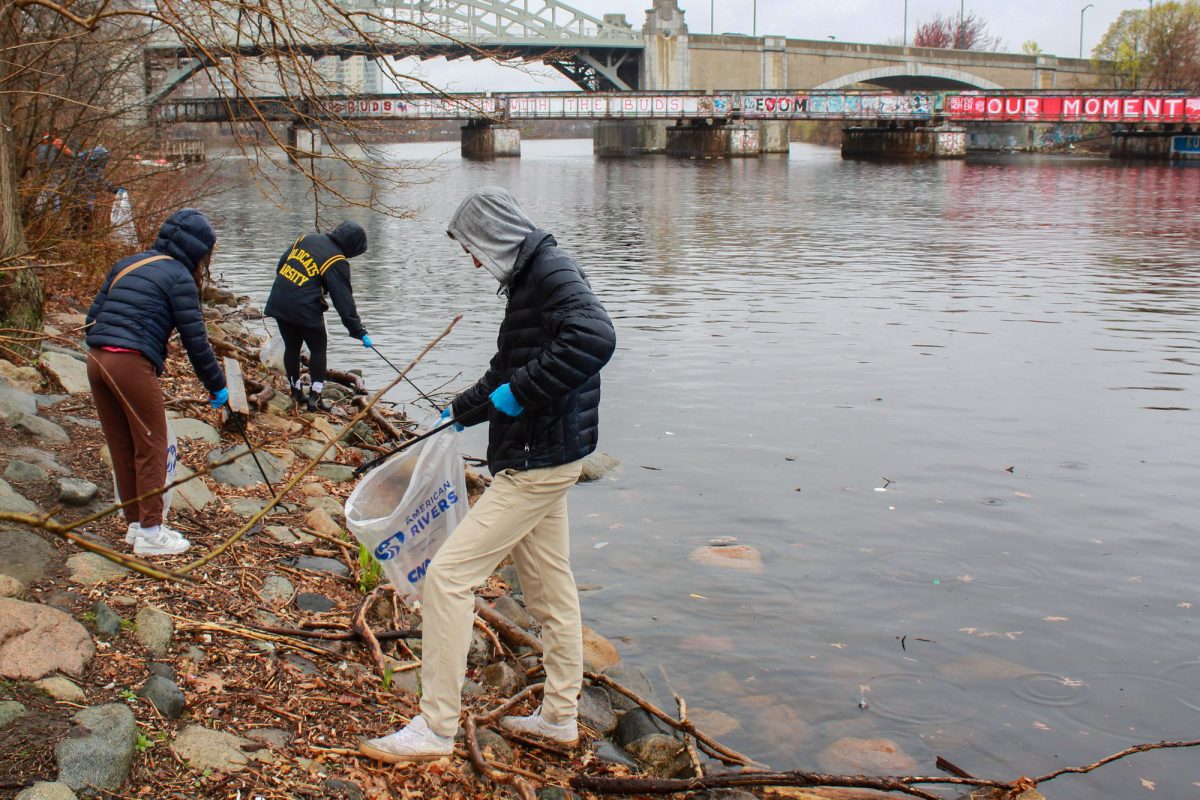Myth: March is “in like a lion, out like a lamb.”
Result: BUSTED.
It’s the typical weather forecast for the month of March: cold, brutal storms followed by eventual (and much appreciated) peaceful, sunny warmth. This month’s transition from winter to spring implies an improvement in temperature, but is it true? Do we need a forecaster to predict a seasonal change that recurs every year? It may surprise you, but the typical “in like a lion, out like a lamb” motto for March is nothing more than an old wives’ tale – especially this year.
“I will say that there are two ways to view the quote – one obvious, the other less so,” said Boston University geography and evironment professor Bruce Anderson in an email. “Generally, March has weather more like February (wintery), while April has weather more like May (spring), hence on average April will tend to be more mild than February.
“The other is that if the start of March is miserable, then the end will be more mild than normal. I would say this latter one is nearly unprovable.”
According to the monthly report from the National Weather Service, Boston’s weather for early March differed hardly at all from the recent forecasts. Throughout the entire 28 days thus far, the average temperature has hovered around 38.6F, with minimal deviation on any given week. In fact, the thermometer read 35F on both March 1 and March 27.
Mid-thirties is not what most New Englanders would call “mild,” but temperatures rose to the 40s and 50s within days of the lower marks. March 9 boasted a high of 50F, which stood unsurpassed until March 21, when temperature rose eight degrees higher. But aren’t “lamb” days expected later in the month?
There might have been some lambs, but there were no true “lions” this March; the last 30 days have been snowstorm-free, with only two days of more than half an inch of any kind of precipitation. Although Boston experienced some flurries, the mild temperatures prevented the snow from accumulating on the ground. Not once did temperatures fall below 21F, the low for the month (March 6).
A scatterplot of this month’s temperatures reveals a nearly parallel line, the data for the last week of March almost identical to the first. The “lion to lamb” shift manifests most during the middle weeks of March, when temperatures rose from the high 30s to above 50 and quickly plummeted again. The warmest days of the month, according to the graph, were the 20th and 21st, with highs of 50F and 58F, respectively.
Unlike temperatures, wind speeds for the month do appear to change over time. As the month of March progressed, wind speed tended to decrease, falling from 30 mph winds to 15-20mph breezes. And while wind speed does have an effect on perceived temperature, actual averages did not mirror this effect.
So where did this “lamb and lion” idea come from if it is not so stark in reality? One may look to the night sky for the answer. The phrase originally referred not to weather, but to the position of the stars. According to NBC News, the alignment of constellations Leo the Lion and Aries the Ram first perpetuated the myth. The phrase refers to these celestial bodies’ transition across the winter sky.
Myth: Bottled water is better than tap.
Result: BUSTED.
Sure, bottled water and tap water taste the same, the Boston University Department of Geography and Environment recently discovered in their World Water Day taste test. Yet some who prefer plastic to glass insist that the water they are drinking is free of the hard minerals found in tap.
Natural-sounding brand names like “Poland Spring,” “Smartwater” and “Vermont Pure” suggest cleanliness, purity, sanitation and health. But in fact, bottled waters contain about the same mineral concentration as standard tap water.
This comes as no surprise to Valerie Belding, a College of Arts and Sciences junior who is vice president of the Environmental Student Organization.
“Very few people actually have any idea of where their water comes from,” she said. “These are protected watersheds, which are monitored multiple times on a daily basis by the Metropolitan District Commission.”
The geography and environment department, in coordination with ESO, arranged for a chemical composition test on the same day as the taste test. The test utilized water samples from the George Sherman Union, the Fitness and Recreation Center and CAS water fountains.
In comparing the tap samples to six bottled water brands, the test found all chemical levels to be within or below the Environmental Protection Agency and Food and Drug Administration recommended ranges. Evian water contained the highest concentration of minerals of any sample tested, according to the ESO blog.
The tap water was not mineral-free. These samples showed the highest levels of aluminum and phosphorous. But these minerals are harmless, and are even essential to the human body in trace amounts.
The Massachusetts Water Resources Authority regulates the chemical composition of tap water through a strict four-step procedure, according to its website. First, rainwater from the nearby Quabbin and Wachusett Reservoirs is purified with natural ozone gas, a safe and natural disinfectant. As the treated water flows through the pipelines, added chloramines prevent contamination.
The pH, or the acidity of the water, is regulated with a sodium carbonate and carbon dioxide mixture. A neutral pH of seven decreases the chances of additional hard metal acquisition. The last step in water treatment includes the addition of fluoride, an essential element that aids in building healthy teeth.
In contrast, bottled water does not undergo such rigorous testing.
“Bottled water is regulated by one single person at the FDA who, in fact, devotes her time to many other duties, making this the oversight of less than half of a person,” Belding said. “While any incidence of tap water contamination is promptly reported to the public, bottled water recalls most often receive late, or no, public notice.”
One thing is for sure, though – the next time you’re choosing between tap and bottled, you can be confident that the biggest difference is probably a pretty label.

























































































































